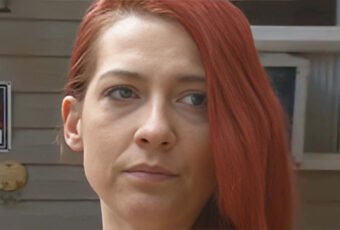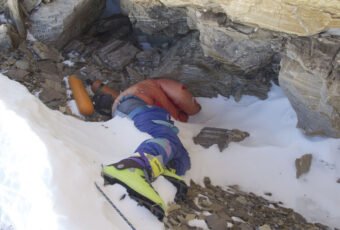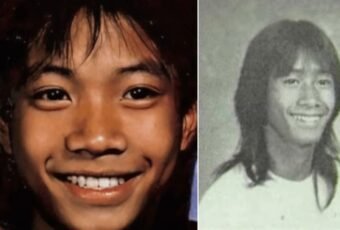On April 27, 2006, in Belleville, Illinois, 17-year-old Ashley Reeves disappeared after leaving her home, supposedly for a job interview. What unfolded over the next 30 hours would shock a community and make national headlines. Ashley, a high school junior, had been brutally attacked and left for dead in the woods by Sam Shelton, her 26-year-old teacher and wrestling coach.
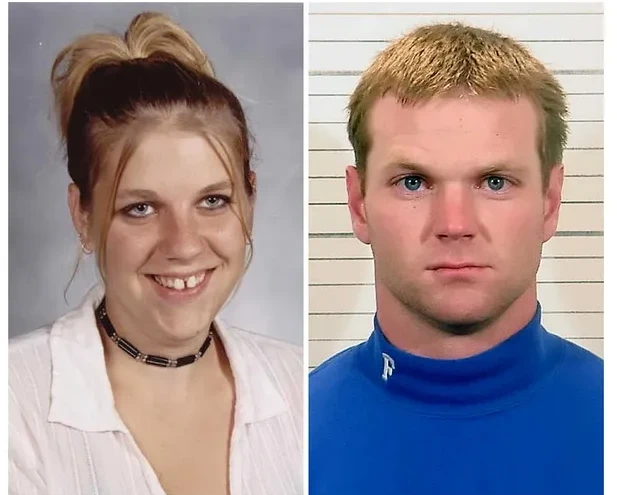
The assault was the culmination of an inappropriate relationship between student and teacher that had spiralled into violence. Shelton, after attempting to strangle Ashley, dragged her into the woods of Citizens Park and left her to die. Ashley clung to life for more than a day, exposed to the elements, as a frantic search ensued.
This is the story of a horrific crime that nearly claimed a young life, the relentless investigation that followed, and the remarkable resilience of a survivor who refused to succumb to the unthinkable. It’s a stark reminder of the dangers that can lurk in trusted institutions and the strength of the human spirit in the face of overwhelming odds.
The Disappearance: A Routine Day Turns Tragic
On April 27, 2006, Ashley Reeves told her parents she had a job interview in a neighboring town and borrowed her boyfriend’s car. Like many teenagers, she was taking a step towards independence. However, this ordinary day took a horrifying turn.
Ashley’s boyfriend, Jeremy Smith, later told investigators that she had planned her day meticulously. After the interview, she intended to change into workout gear and meet friends for basketball. It was a snapshot of a typical teenage life: ambition, friendship, and sport. But as hours passed, Ashley’s silence grew alarming. She wasn’t answering calls or texts, behavior starkly out of character for the sociable teen.
By nightfall, Ashley’s parents reached out to the St. Clair County Sheriff’s Office. The first hours of a missing person case are crucial. According to the National Center for Missing and Exploited Children, chances of finding a person decrease significantly after 48 hours. Law enforcement, understanding this urgency, sprang into action.
They found Jeremy’s abandoned car with Ashley’s unworn interview outfit and gym clothes inside. This finding made it clear that Ashley hadn’t run away; something far more sinister had occurred.
The Investigation Unfolds: Unmasking a Predator
As investigators dug deeper, a disturbing lead emerged. Ashley’s friends revealed she had been seeing an older man and planned to meet him the night she disappeared. Ashley’s mother, Michelle, combing through her daughter’s phone records, noticed a frequently dialled number. It belonged to Sam Shelton, a 44-year-old high school teacher and coach.
When Michelle called, Shelton’s response was chillingly nonchalant. According to investigators, he claimed ignorance of Ashley’s whereabouts and then returned to dancing at a local club. His dismissive attitude, especially given that he knew Ashley was missing, raised immediate suspicions.
Shelton arrived at the sheriff’s office on April 28, fresh from coaching baseball practice. His demeanour was a study in contradiction: outwardly calm, yet his actions screamed guilt. Over the next 12 hours, investigators witnessed a chilling display of deception, a slow unravelling of lies that would reveal the true horror of what happened to Ashley.
Initially, Shelton painted himself as the victim of an infatuated student. “She’s a persistent young woman,” he said, his voice tinged with feigned exasperation. “She’s been pursuing me, making constant calls.” It’s a narrative all too familiar in cases of inappropriate student-teacher relationships – blame the victim, and portray her as the aggressor.
But as hours ticked by, Shelton’s story crumbled. He admitted to crossing a line that should never be breached between an educator and a student. “I will say this: we never kissed. We never kissed,” Shelton confessed as if the absence of a kiss somehow mitigated his actions. “Yes, we did have sex in the back of the vehicle, and after that day I felt absolutely terrible about that.”
As the interrogation continued, Shelton’s story shifted again. He admitted to being with Ashley on the day she vanished but claimed there had been an argument, not an attack. “She was screaming and kicking and everything,” he said, his voice devoid of emotion. “So I got her [out of the car], shut the door, ran the car, I took off. I left her. I left her there is what I did. I left her right out there.”
This version of events, had it been true, would still have been a gross dereliction of duty for a teacher. But investigators knew they weren’t getting the full story. Shelton’s changing narrative, his calm recitation of abandoning a distressed student – it all pointed to something far more sinister.
The breakthrough came hours into the interrogation. Perhaps worn down by the relentless questioning, or perhaps realizing the futility of his lies, Shelton finally revealed the truth. And it was far worse than anyone had imagined.
Shelton’s Confession: A Chilling Narrative of Attempted Murder
Shelton’s final confession was a study of calculated brutality. He described putting Ashley in a wrestling chokehold, a move that caused her to stop breathing. Fearing he’d killed her, he decided to cover up his crime. “I dragged her to a wooded area,” he said, his voice eerily calm. “I tied this thing around her neck to make it look like someone choked her out there.”
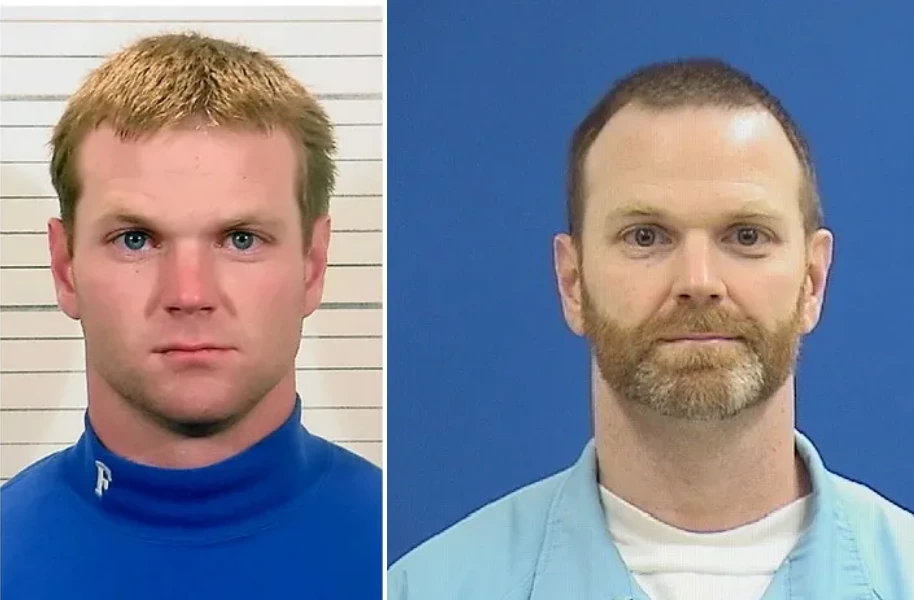
His actions weren’t those of a man in a blind rage, but of one meticulously staging a scene. “I was a nervous wreck, thinking, ‘What do I do? What do I do?'” he recalled. “I wanted to make it look like she had gotten, she got strangled there in the woods.” This level of premeditation chilled investigators. Shelton had time to think, to plan, to try to deceive.
Then, in a moment of savage desperation, he escalated. “All of a sudden I heard like a gurgle,” he recounted. “And when I heard the gurgle, I let go. And when I let go, she had like spit, foam, coming out of her mouth. And then I had seen that she was the sickest color I had ever seen.” He had strangled her repeatedly with a belt, pulling so hard that the belt broke.
His description is a window into the mind of a predator. He wasn’t remorseful; he was methodical, even detached. After his attack, he said he fled like a “bat out of hell,” leaving Ashley alone in the woods to die. It was the final act of a man who saw his student not as a person, but as a problem to be eliminated.
As investigators prepared to follow Shelton into the woods, the full extent of his cruelty became apparent. His concerns were not for his victim but for his own comfort. “Am I gonna be able to get like, my contact solution, and take my contacts out? And my toothbrush?” he asked, seemingly oblivious to the gravity of his crimes.
His self-absorption didn’t stop there. Later, he inquired, “Am I gonna get like, a little private toilet? Because I can’t pee when there is people around because of my urinary stress disorder.” The man who had just confessed to leaving a teenager to die in the woods after a brutal attack was worried about his ability to urinate in private. “Because I’ll be miserable if I can’t pee,” he added, his priorities a grotesque parody of human decency.
Ashley’s Miraculous Survival: The Girl Who Refused to Die
The search for Ashley was a race against time and nature. For 39 agonizing minutes, rescuers combed the dark, rain-soaked woods. Every second ticked away Ashley’s chances. First responders, trained to hope for the best but prepare for the worst, are expected to find a body.
Then, a miracle. They found Ashley, motionless but breathing. It was a moment of stunned disbelief. After Shelton’s graphic confession, after more than 30 hours in the woods, how could she still be alive? Yet there she was, defying all expectations, her chest faintly rising and falling.
Paramedics sprang into action, even as they harboured private doubts. In their professional opinion, honed by years of responding to critical emergencies, they didn’t believe Ashley would survive the journey to the hospital. It’s a testament to their training and dedication that they fought for her life anyway, working tirelessly to stabilize her as they rushed her through the rain-slicked streets.
At the hospital, the full extent of Ashley’s injuries became clear. The damage from Shelton’s attack was severe. He had choked her with such force that he broke a belt in the process. Her throat bore the marks of his attempts to strangle her, and her body showed signs of the harsh woodland environment she’d been left in.
But it wasn’t just the physical trauma that concerned the doctors. The human brain is incredibly vulnerable to oxygen deprivation. When Shelton choked Ashley until she made what he described as a “gurgle” sound – likely the sound of her body fighting for air – he may have caused hypoxic brain injury. This type of injury can lead to a range of devastating consequences, from cognitive impairments to complete brain death.
The medical team faced with this grim reality, made a critical decision. They placed Ashley in a medically induced coma. This wasn’t giving up; it was giving her brain the best chance to heal. By reducing her brain activity, they hoped to minimize swelling and prevent further damage. It was a precarious balancing act: keeping her under to protect her brain, while monitoring her closely for signs of improvement or decline.
Days turned into weeks. Ashley’s family kept vigil, their hope warring with the doctors’ cautious prognosis. The community that had frantically searched for her now waited, prayed, and rallied around the Reeves family. Local news stations provided updates, and Ashley’s story began to spread, touching hearts far beyond Illinois.
Then, Ashley did what she’d already done once: she defied the odds. She woke up. But her battle was far from over. The damage from the attack and her time in the woods had taken a severe toll. Basic functions that most of us take for granted – speaking, swallowing, even moving her limbs – were now monumental challenges for Ashley.
In her memoir, “Left for Dead,” and in a poignant interview with Elizabeth Smart on Crime Watch Daily, Ashley described the arduous path of her recovery. “They had to retrain me how to eat and how to drink,” she revealed. It’s a statement that hits hard. Imagine having to relearn how to bring a glass of water to your lips, and how to chew and swallow food. Yet Ashley found joy in these small victories. “I remember my first drink of water,” she recalled, “and it was amazing.”
Her struggle to regain speech and mobility was equally challenging. The human brain’s ability to relearn these functions, a phenomenon known as neuroplasticity, is remarkable but requires immense effort. Ashley’s days were filled with gruelling therapy sessions. She had to teach her muscles to obey her will again, to form words when before there had only been silence.
Throughout this period, Ashley displayed a resilience that left her doctors and therapists in awe. Dr. Alison Cogan, an occupational therapist specializing in trauma recovery, notes that “the patient’s will to recover is often as important as the treatment itself. Ashley’s case is a prime example of how determination can push the boundaries of what we consider medically possible.”
The Legal Aftermath: Justice Delayed, But Not Denied
While Ashley fought for recovery, the legal system grappled with how to hold Sam Shelton accountable for his heinous actions. The severity of Ashley’s injuries and Shelton’s own chilling confession left little doubt about his guilt. Yet the path to justice was not as straightforward as many in the community had hoped.
In a move that stunned and angered many, Shelton agreed to a plea deal. He pleaded guilty to attempted first-degree murder, avoiding a trial that could have exposed the full extent of his crimes to public scrutiny. For some, this felt like a betrayal. They wanted Shelton to face a jury, to have his actions dissected in open court, to be publicly branded as the predator he was.
However, plea bargains are a common and often necessary part of the legal system. According to the Bureau of Justice Assistance, over 90% of criminal cases in the U.S. are resolved through plea bargaining. Prosecutors often weigh the certainty of a conviction against the trauma a trial could inflict on victims. In Ashley’s case, her ongoing recovery likely played a role in this decision.
Shelton’s sentencing took place while Ashley was still relearning basic functions. She was unable to speak in court, to face her attacker, to tell the judge how this man had shattered her life. It was a cruel irony: the very severity of Shelton’s crime had robbed his victim of the chance to testify against him.
In the end, Shelton was sentenced to 20 years in prison. For many, it didn’t feel like enough. How could any number of years compensate for the life Ashley had lost, the innocence that had been stolen? But in the realm of criminal justice, sentences are often a cold calculus of statutes and precedents, not a true measure of the harm inflicted.
On April 22, 2024, nearly two decades after his heinous crime, Sam Shelton walked out of the Illinois Correctional Center a free man. He had served 17 years, released three years early due to good behaviour credits. It’s a common practice in the overcrowded U.S. prison system, but for Ashley’s supporters, it felt like another injustice.
For the next three years, Shelton will be on parole, his movements restricted, and his interactions monitored. One condition is absolute: he is banned from any contact with Ashley Reeves. But for many, the question lingers: Is this justice? Has the system adequately punished a man who not only violated his position of trust but also tried to murder a teenager to cover up his crimes?
Ashley’s Recovery and Advocacy: From Victim to Voice
While the legal system grappled with Shelton’s punishment, Ashley Reeves embarked on a different journey: from victim to survivor to advocate. Her path was not easy. The physical challenges of her recovery were matched by the emotional toll of her ordeal. In her poignant interview with Elizabeth Smart, Ashley revealed the lingering shadows of her trauma.
“I still cannot recall what happened in the days leading up to and after the attack,” she confessed. This amnesia is a common coping mechanism in trauma survivors. Dr. Bessel van der Kolk, a leading expert in post-traumatic stress, explains in his book “The Body Keeps the Score” that the brain can suppress traumatic memories as a survival tactic. But this survival comes at a cost. “Part of me wants to try and remember,” Ashley said, “and then part of me is like ‘Oh, that might not be a good idea.'”
Yet, even with these gaps in her memory, Ashley chose to share her story. In 2011, she co-authored her memoir, “Left for Dead.” Writing the book was an act of reclamation, a way to take control of her narrative. It was also a beacon for other survivors, a testament that even after unimaginable trauma, there is hope.
Her resilience inspired countless others. Survivors of domestic violence, sexual assault, and attempted murder reached out, finding strength in Ashley’s journey. She became a living embodiment of the fact that a traumatic event doesn’t have to define a life.
What are your thoughts on Ashley’s case? Do you believe justice was served for her?

